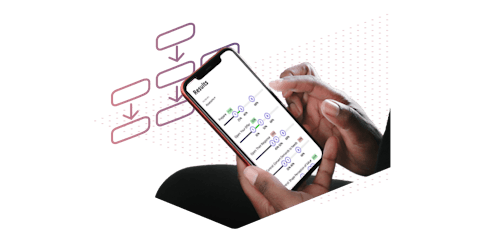Four Reasons Why Virtual Selling is the New Normal
Sales performance improvement

In just two months, the selling industry has experienced sweeping change. The common characteristic of these changes has been the need to engage customers in a virtual setting. While this change was likely on the horizon, global events have forced businesses and individuals to fully embrace a virtual model practically overnight.
This kind of wholesale change is demanding because it requires adaptation at all levels. One must change their mindset, their use of technology, and even their business model. Despite the breadth and depth of these challenges, some have taken a measured approach to their response. Some have hesitated to fully engage virtual selling because they believe that previous business practices will return as the pandemic recedes.
However, many effective and forward-thinking sales professionals agree that the conditions of today are not an interruption but rather an introduction. Virtual selling is fast becoming a normal approach to business. Here, we look at four reasons why virtual selling is the new normal. These four reasons look beyond the immediate circumstances of today and instead focus on why a virtual approach to sales will continue to thrive even in a post-pandemic world.
Virtual Selling Accesses a Globalized Market
Globalization is more than a trend; it is a necessity in our increasingly connected world. Globalization is why the challenges of one country are often shared by many other countries. As a result, sales professionals need the flexibility and the reach to engage customers across regions.
Effective sales professionals are developing an expansive approach to the market by leveraging technology to reach more customers. This idea is quickly rising to the level of an imperative, given that “the emerging economies’ share of Fortune Global 500 companies will probably jump to more than 45 percent by 2025, up from just 5 percent in 2000,” according to research from McKinsey. Simply put, the growth of tomorrow will not look like the growth of yesterday. Moreover, an estimated 70% of the companies scheduled to reach a revenue of $1 billion or more will come from emerging markets, according to the same data.
Sales organizations can adopt this strategy with a sales approach that works from a distance. Doing so means moving beyond the conventional thinking that seeks to pair the sales opportunity with the sales professional in closest geographic proximity to the customer. Instead, leaders should choose the sales professional that has the skill set and experience most suited to the customer’s needs, even if that sales professional is in a distant region. While unconventional, this approach makes intuitive sense because a sales professional’s acumen is more relevant than their address.
Virtual Selling Quickly Aligns to the Customer’s Changing Needs
Tracking the customer’s changing needs is critical to winning the sale. Doing so is difficult when sales professionals must align schedules, arrange travel plans, and deal with unexpected changes to the customer’s availability. Virtual selling overcomes many of these challenges by creating an environment in which meetings can occur when they are needed.
As the customer’s priorities and needs change, the sales professional must be equipped to track and adjust. This flexibility has become particularly important as business models change at an increasing rate. In fact, a Boston Consulting Group survey of 1,500 senior executives showed that 94 percent of respondents “engaged in business model innovation to some degree.” This reality translates into a more iterative process on the buyer’s side of the table. With virtual engagement, sales professionals have more of an opportunity to be part of this process without being subjected to the sidelines, an all too common outcome when a customer is regularly changing paths.
This quickening pace of change is also increasing the complexity of understanding the customer’s core challenges and goals. As a result, sales professionals need to develop “situational fluency,” which is the ability to discuss each buyer’s specific business issues, what is causing them, and which capabilities are needed to address those challenges for the customer. Developing this fluency means being able to effectively leverage the immediacy of a virtual engagement.
Virtual Selling Enables an Agile Approach
Previously, companies could sell a product and build revenues behind protective barriers. These barriers insulated the company from threats. The high cost of technology, long innovation periods, and developmental lead time all meant that competitors had many walls to scale if they wanted to grab market share. Those walls have fallen. What remains is the agile approach.
An agile model focuses on collaboration and responsiveness to change rather than adhering to a single, unchanging plan. This fluidity perfectly matches the customer’s dynamic buying journey in which movement starts, stops, and sometimes even reverses. In this setting, customer conversations no longer follow a logical progression. Questioning for needs, floating ideas, and positioning value are tightly woven and appear in every customer dialogue. Agility in selling means flexing and using different skills when and where you need them.
Virtual selling fits this model because it maintains communication during the critical periods that tend to unfurl in the periods between traditional in-person meetings. In these important “in-between” periods, sales professionals have an opportunity to understand the buying factors that contribute to the customer’s buying decisions. A virtual connection also enables the sales professional to take the iterative steps toward building consensus and even exploring the white space within an existing customer account.

Richardson Accelerate™ Sales Performance Platform
Accelerate provides a digital learning experience that uses assessments, video, gamification, and bite-sized modules to build sales competencies.
Learn MoreVirtual Selling Accelerates Trust Building
Sales professionals are more effective when the customer perceives them as a trusted advisor. This coveted status belongs to sales professionals who have a more sophisticated, in-depth understanding of the customer’s challenges and goals. A trusted advisor is equipped to address the complexities of the customer’s industry and is therefore consulted in advance of decisions.
Virtual selling capabilities help sales professionals ascend to this level by leveraging the immediacy of a virtual connection to facilitate more interactions. With an understanding of how best to use the virtual medium, sales professionals are always prepared to jump into a discussion with a group of stakeholders and become an influential voice. This increased frequency of interaction helps blur the line that traditionally separates the stakeholders from the sales professional.
Put simply, strong communication advances trust, and trust advances the sale. The connection between trust and positive, regular engagement is not only intuitive, it is also proven. Consider a massive 2015 Gallup study covering 2.5 million manager-led teams across 195 countries, which determined that “engagement improved when supervisors had some form of daily communication with direct reports.” This same principle applies to the relationship between customers and sales professionals. A virtual presence allows regular communication that is critical to establishing and maintaining the trust that precedes every sale.
Virtual selling is here to stay. Sales professionals who develop the skills to sell virtually will benefit not only now, but also in the long term because the circumstances of today are redefining what will be normal in the future.

White Paper: Success in the Era of Virtual Selling
DownloadGet industry insights and stay up to date, subscribe to our newsletter.
Joining our community gives you access to weekly thought leadership to help guide your planning for a training initiative, inform your sales strategy, and most importantly, improve your team's performance.






